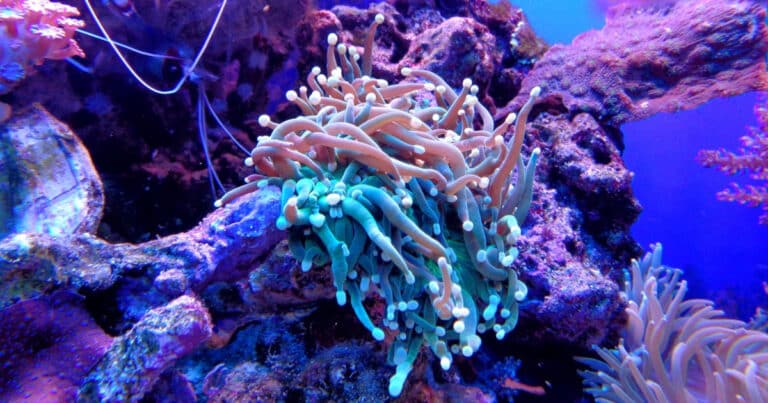By Sydney Cohen – Professor Ove Hoegh-Guldberg of the ARC Centre of Excellence for Coral Reef Studies and The University of Queensland says in a Science Daily article that “evidence gathered by scientists around the world over the last few years suggests that ocean acidification could represent an equal….. or perhaps even greater threat….. to the biology of our planet than global warming”.
The “Evil Twin of Global Warming”
Researchers have deemed ocean acidification the “evil twin of global warming.” Ocean acidification refers to the process when the CO2 emitted by human activity, mainly by burning fossil fuels, dissolves into the oceans. It is happening independently of but in combination with, global warming.
Fossil Fuels and their Role in Global Warming
Carbon pollution is one of the biggest threats to our planet. When carbon dioxide builds up in the atmosphere, it creates a greenhouse effect that traps heat and causes climate change. One of the major sources of carbon pollution is the burning of fossil fuels.
Marine ecosystems and coastal ecosystems, containing marine life and marine organisms are impacted quite negatively by climate change, resulting from the burning of fossil fuels.
What is Ocean Acidification?
Ocean acidification occurs when sea waters absorb atmospheric carbon. This process results from the warming of our oceans, due to climate change, which allows for oceans to absorb excess carbon dioxide. The warmer oceans get, the more absorption power they have.
Carbon dioxide reacts with ocean water to produce a chemical known as carbonic acid. The presence of carbonic acid causes the acidity of our oceans to increase. And the more acidic our oceans become, the less calcium carbonate they can hold, which is a chemical compound necessary for the formation of many shells and marine species.
CO2 Concentrations Drive Rising Temperatures and Acidification
As the burning of fossil fuels increases the amount of carbon dioxide in our atmosphere, and in turn heats the planet and ocean temperatures, ocean acidification occurs. This change in the sea is not happening the same everywhere – there are regional differences, such as varying temperatures, elevations, and depths.
The water absorbance rate increases as water temperature increases. Therefore, the warmer our planet gets, the more likely our warming oceans will absorb excess CO2.
Ocean Acidification Affects Marine Life
Coastal and marine ecosystems are being threatened by global warming. The resulting acidification in the oceans along the coast and other climate effects are serious threats. The acidification of marine waters prevents the production of skeletons and shells of many species, because acidic oceans cannot hold as much calcium carbonate, a required chemical for this process.
This, in turn, affects the marine food chain. The Environmental Protection Agency (EPA) states that, “if acidification reduces the populations of small animals like clams, oysters, and sea urchins, the larger animals like fish that feed upon those could run short of food, and so on up the food chain.”
The EPA describes that “the acidity of a liquid results from its concentration of hydrogen ions, which is typically measured and reported as pH. The lower the pH value, the higher the acidity of a liquid. Solutions with low pH are acidic and solutions with high pH are basic (also known as alkaline).”
On their Ocean Acidification webpage, they state that “prior to the Industrial Revolution, average ocean pH was about 8.2. Today, average ocean pH is about 8.1. Each decrease of one pH unit is a ten-fold increase in acidity. This means that the acidity of the ocean today, on average, is about 25% greater than it was during preindustrial times.”
The Impacts of Ocean Acidification
Ocean water has naturally been slightly less acidic than it is today. Ocean science and pH measurements have revealed that today’s ocean acidity is a result of the absorption of excess carbon dioxide, that has occurred as our planet and ocean temperatures have increased due to global warming.
Coastal Acidification
While ocean acidification describes changes in ocean chemistry from atmosphere-driven emissions of carbon dioxide, a coastal acidification mechanism is a different method by which coastal chemistry changes. Coastal acidification includes local changes in the chemical composition caused by freshwater sources from rivers and excess dietary wastes such as nitrogen and organic carbons.
Excess fertilization or runoff can cause the growth of algae. The EPA describes how “in coastal waters excess nutrients stimulate the growth of algae. Algae multiply rapidly under ideal growing conditions and algal blooms can impair water quality by causing hypoxia, foul odors and even toxins. A less well-known fact is that algal blooms can contribute to acidification. When algae die their decomposing tissue releases carbon dioxide directly into the water, resulting in acidification.”
Because algal blooms are often caused by agricultural runoff, the increased acidification as a result of dead algal blooms is specified as coastal acidification which generally takes place in coastal ecosystems, near coastal communities.
Consequences on Coral Reefs
Coral reefs are one of the most beautiful and diverse ecosystems on Earth. However, they are also one of the most endangered. One of the main threats to coral reefs is ocean acidification. This can have serious consequences for marine life and coastal communities.
Carbon pollution, and atmospheric warming as a result of climate change have been causing coastal acidification, where most of our world’s coral reefs exist. Healthy, coral reefs can provide protection for coastal communities, preventing strong waves from damaging shores.
However, corals are one of the species whose calcium carbonate production has been hampered by our increasingly acidic ocean waters.
According to National Geographic, without successful calcium carbonate production, “shells grow slowly and become weak. Coral reefs with breakable, slow-growing corals erode more quickly than they accrete. Reefs can disappear, and the extinction of entire species is possible.”
Effects on the Economy, People’s Livelihoods, and Communities
Shell fishing also suffers from carbon pollution. In a wide variety of locations, the warming water is expected to decrease the Dungeness crab population. The Northwest fishing industry is feeling the impact on its economy as the temperatures increase.
Warm water temperatures can cause rapid growth in toxic algae. Toxic algae produce toxic neurotoxins called domoic acids which build up in shellfish, posing an acute threat to health. The shellfish then becomes inconsumable and affects the fishing industry that season.
How Growing Sea Plants Can Help Slow Ocean Acidification
Scientists have discovered that kelp, eelgrass, and other vegetation absorb carbon dioxide effectively and lower the acidity of our oceans. Scientists believe introducing these plants into local waters could prevent contaminated seawater and other contaminants.
How YOU Can Work to Stop Ocean Acidification!
We must all do our part to reduce ocean acidification and help preserve the marine ecosystems we love. Start by evaluating your daily habits and see where you can make small changes that will have a big impact. If every person makes an effort to reduce their carbon footprint, such as choosing to bike or walk to school rather than driving, switching to an electric vehicle, or even powering their house with solar panels, it will go a long way in conserving our marine ecosystems and preserving the healthiness of our oceans for future generations.
Ocean Acidification and Religion
Interfaith Oceans is an organization bringing together different faith communities to protect our oceans. For example, one page of their website is dedicated to Indigenous resources and organizations. Here they describe how the elders in coastal nations have vastly different beliefs, but what many of them have in common is that they “share the perspective that all of life is interconnected, just as the generations are. If we respect the waters and the earth, they will nurture us, as we are all connected and related.” The ocean can be our greatest ally, or our greatest enemy. It is up to us to protect the ocean from acidification and the ocean will protect us in return.
* Featured image source
Interested in learning more about water pollution? Check out this blog post!







